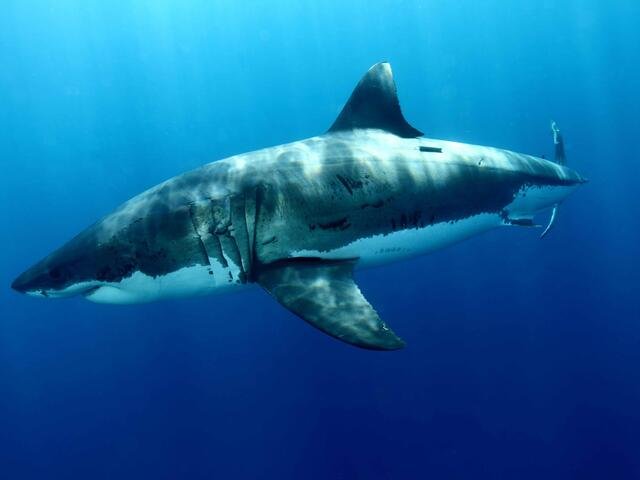The great whites, commonly referred to as white sharks, are among the most well-known and most misjudged ocean hunters. They represent apex predators that are important in preserving harmony in the marine ecosystem but have many challenges facing their conservation. The declining numbers of these fish mainly caused by human beings call for immediate remedial action. Therefore understanding these challenges will help ensure survival of white sharks by educating individuals on how they can participate in their conservation.
The Importance of White Sharks in the Ecosystem
Being at the peak of the food chain, white sharks control populations of certain prey species including seals, sea lions and fish. Consequently, they regulate prey population size and behavior which eventually determines the health status of marine habitats such as kelp forests and coral reefs. In absence of sharks, there would be disorder in the ecosystem which might result in overabundance of some species with eventual extinction of all aquatic environment types.
Yet their population continues decreasing rapidly due to various anthropogenic causes indicating that white sharks are among endangered species despite being vital for marine ecosystem balance.
Challenges in White Shark Conservation
1. Overfishing and Bycatch
One of the major threats to white sharks lies in by-catch when these creatures become caught incidentally in fishing nets targeting different species. Besides, white sharks are also hunted for their highly prized fins, teeth and jaws in illegal wildlife markets. Due to their low reproductive rate, white shark populations are further endangered. Unlike other fish, they give birth to only a small number of pups after a long gestation period indicating that population recovery takes time when individuals have been removed from the ecosystem.
2. Shark Finning and Illegal Trade
Shark finning, which is cutting off just the fins from sharks while leaving behind all other parts has led to a drastic reduction in global shark numbers especially since white ones possess relatively bigger fins that sell at higher prices within illegal trading schemes . Although there are worldwide bans on this delicate trade, it persists as long as people keep consuming soups made from shark fins among other luxurious goods.
3. Habitat Destruction
Coastal development, pollution as well as climate change have significantly altered white sharks’ habitats. Human activity is devastating coastal areas where sharks normally breed and hunt. The environment becomes further threatened through polluted plastic, chemical runoff, and oil spills. In response to climate change, shifts in prey species distribution due to rising ocean temperatures force sharks into new areas which could expose them more to increased fishing or habitat degradation risks.
4. Misunderstanding and Fear
White sharks have been depicted for a long time in popular media as man-eating beasts that provoke fear leading to indiscriminate killing. However, contrary to this belief, incidents of white shark attacks on humans are rare because most of these sharks tend to shy away from interaction with humans. It is difficult to promote conservation efforts when people have negative perceptions about sharks because they hardly understand their ecological significance and may endorse killing programs aimed at controlling them.
How You Can Help White Shark Conservation
Despite the challenges, there are several ways you can make a difference in white shark conservation:
- Support Responsible Fisheries and Marine Sanctuaries
Support organizations and fisheries that engage in sustainable practices and advocate for marine life preservation. Look for seafood that has received certification from organizations such as the Marine Stewardship Council (MSC) whose aim is to protect our oceans Minimize incidental catch. - Raise Awareness
Spread information across about the relevance of white sharks and its dangers in life? To eliminate such fallacies, accurate information should be shared with friends, relatives, and social online platforms. Education concerning their role in maintaining ocean support systems can help reverse these misconceptions and eventually cause protection. - Support Conservation Organizations
Such are groupings which have white sharks only under them and they dedicate themselves into habitat conservation. Such examples include donor organizations or volunteers like Oceana, Shark Trust and White Shark Conservation Trust among others all working towards promoting research activities about them. - Reduce Plastic Use
Oceanic plastics are a great danger to marine creatures like sharks. You can aid in the conservation of environments that sharks and other aquatic species rely on by lowering your use of plastics, recycling materials and endorsing plastic pollution clean-up initiatives. - Get Involved in Citizen Science
Join a citizenship scientific project focusing on marine life. Plenty of organizations provide an opportunity for people to take part in data collection e.g. shark sighting recording or tracking their migration patterns. The data, thus obtained, is crucial for scientists researching shark numbers and coming up with ways to preserve them.
Conclusion
White sharks have many obstacles such as bycatch and illegal trade as well as habitat destruction and public wrong beliefs about them. Nevertheless everyone can make difference through promoting sustainability, creating social awareness, minimizing the consumption of plastics or supporting conservation projects. Collaboratively we can make sure that these majestic hunters flourish in our oceans long into the future.



